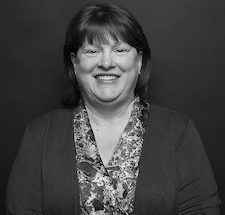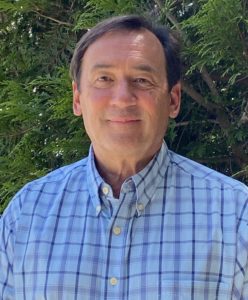In the preface to their new study measuring transportation security, University of Michigan researchers Alix Gould-Werth and Alexandra Murphy write: “Reliable access to transportation is essential to holding a job, grocery shopping, and getting to school, child care, social services, and other activities. Transportation insecurity — the experience of being unable to move from place to place in a safe or timely manner — has important consequences for people’s ability to connect to opportunity and flourish.” The study estimates that one in four American adults experiences transportation insecurity: a figure that helps explain the growing demand for alternate modes of transportation, from ridesharing to bicycling and other forms of active transportation.
CUSA spoke recently with Bruce Forbes and Ame Sanders of Circles Upstate South Carolina. These deeply rooted Greenville residents found an innovative solution to their region’s lack of transportation access…a solution they’re betting Circles chapters and Big View teams across the U.S. can use to build transportation pathways in their own communities.
Part One of our two-part story described how Bruce and Ame’s early involvement with Circles USA led them to identify their region’s pressing transportation needs as a major Big View opportunity. Here, Bruce and Ame discuss the challenges and successes of their vanpooling program, which has expanded transportation and job pathways in their Upstate SC region.
+++
 “We didn’t have a lot of funds,” recalls Ame Sanders, who joined the Circles Upstate SC chapter in 2018 and found herself drawn to Big View teamwork. “We didn’t have a lot of fundraising skills, we didn’t have any grant writers on our team, none of that. That’s how we ended up with the idea of the vanpools: they’re treated as transit by the feds, so it’s eligible for federal formula funding once it’s established for two years. You report the miles through your transit organizations the same way that you do bus miles; then they begin to bring in money, which then can fund the vanpool subsidy. So public transit was critical.”
“We didn’t have a lot of funds,” recalls Ame Sanders, who joined the Circles Upstate SC chapter in 2018 and found herself drawn to Big View teamwork. “We didn’t have a lot of fundraising skills, we didn’t have any grant writers on our team, none of that. That’s how we ended up with the idea of the vanpools: they’re treated as transit by the feds, so it’s eligible for federal formula funding once it’s established for two years. You report the miles through your transit organizations the same way that you do bus miles; then they begin to bring in money, which then can fund the vanpool subsidy. So public transit was critical.”
Facing the heavy lift of running a full-time vanpool, reaching out to employers, onboarding employees and riders, and reviewing leases, Bruce and Ame’s tiny team soon realized they’d gone as far as they could without institutional support.
“In the end,” says Ame, “we needed a partner.”

Bruce Forbes—who brought on his workplace SHARE (Sunbelt Human Advancement Resources, Inc., a nonprofit community action agency) as lead organization for a new Circles USA chapter in 2014 after hearing testimonials from his local Methodist church—says Ame’s connections led the chapter to Ten at the Top: a nonprofit that helps the 10 counties in upper South Carolina in a whole variety of areas, including transportation, with their Upstate Mobility Alliance group.
“We started meeting with their director on a weekly basis,” Bruce says, “brainstorming and really sussing out the vanpool idea. Then, through the efforts of Upstate Mobility Alliance, we got in touch with Commute with Enterprise. Enterprise—the rental cars—operates Commute with Enterprise all across the country, and they had a kind of turnkey option for us.”
“If we hadn’t found a partner,” Ame adds, “we would have had difficulty getting the resources together to execute it. [Enterprise] has staff aimed at doing this. It’s very flexible and doesn’t require a long term commitment. It’s a month-to-month commitment for the riders. I would say that without [Commute With Enterprise], we wouldn’t have been able to get any legs under it.”
The vanpool startup, say Ame and Bruce, was a sort of “infiltrating the community of transportation.”
“Bruce and I didn’t know anybody who ran transit in Anderson or Cherokee County,” Ame says. “So I volunteered to be on the board of a local organization that engaged people who are interested in transportation. You have to begin to become part of this bigger community of people who are trying to solve transportation problems. You can’t just be isolated off by yourself. Through these partnerships, we were able to gain credibility, gain access to funding and to the people in the transit organizations across the whole upstate.”
|
– Bruce Forbes, Special Projects Coordinator, SHARE and Circles Upstate SC |
One surprising part of the vanpool development, they explain, was how the program took root in unexpected places while failing to flourish in others. “We thought that Greenville would be the first to jump on it,” Ame muses. “It seemed like there was a well-documented need, there were people who were interested, all that kind of stuff. But no! We still have no vanpool running in Greenville County. The real places that we managed to get a foothold came through these partnerships and relationships. And the Upstate Mobility Alliance introduced us to people in Spartanburg and Cherokee Counties who said, ‘Vanpools, that’s a great idea, we’re going to run with it!’ And so they took off with it. Under the leadership of OneSpartanburg, Inc., along with The United Way of the Piedmont and Spartanburg Area Transit Association (SPARTA), they were able to provide layered subsidies to start vanpools in their area and engaged local businesses to join the program.
Bruce describes the Commute with Enterprise staff as “wonderful” and appreciates that their corporate partner has gone out “with subsidy in hand” and spoken on the program’s behalf to large employers.
“The key,” he says, “is: How do you get this group of people that live relatively close to one another—that also need transportation—to become a vanpool? One of the neat things that we have learned is that when a vanpool forms, it lasts for six years or more. They become a family; they become friends and they help one another. Plus employers use it as a benefit now. That’s huge, because [many] employers are trying to find different ways to attract good employees. People are moving more easily now. So this becomes a huge benefit, an employer paying part of their transportation costs.”
|
– Bruce Forbes, Special Projects Coordinator, SHARE and Circles Upstate SC |
Steadily—over the course of weeks, months, and years—the Upstate South Carolina chapter vanpool has grown its support among government, nonprofit, corporate, and individual partners. With its roots in a strong faith-based organization, Bruce and Ame’s transportation program runs the gamut of the many resources Big View teams can mobilize to make change across entire regions.
“It’s a little bit hard to sell an idea if you have zero money in the bank,” Ame remembers. “But we were blessed with generous gifts from the church, and from members in the church who have sponsored us. We did a GoFundMe and got some individual donations, which is always helpful. We want to give people a way to connect, to give money. That’s not going to fund the vanpools… [but] it gave me confidence. Because if we didn’t have any money in the bank, we couldn’t really even have the conversation. So, yes, the church has been supportive of Circles, but they’ve been supportive of this Big View work as well. And I am very grateful for that.”
Also crucial, she adds, are local sponsors or owners of the initiative. “Distributed and local ownership is key. We have identified contacts or owners in each county. In Spartanburg County, that role has been played beautifully by their local economic development team, who are part of the OneSpartanburg, Inc. initiative. That team immediately ‘got it.’ They’ve worked with the local news station to create a promo spot. Grace Management, the employer highlighted in it, had the first vanpool that went live for us in the upstate.”
“It’s the beauty of this Big View process,” Bruce says. “The direction that we’ve taken—this is totally replicable in any community that Circle serves right now. Commute with Enterprise is pretty much everywhere. There may already be vanpooling in some of the communities! It can be done. The goal of The Big View is, in my opinion, to help reduce poverty for people that may never even have heard of Circles. And that’s okay; because it’s getting people good-paying jobs in a sustainable way for them, getting them back and forth to work, and building community in their vanpool and at their companies.”